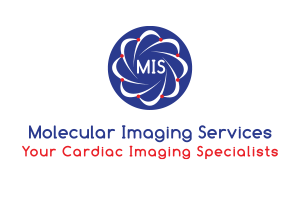
Myocardial Blood Flow (MBF) Assessment Aids in Diagnosis of CAD
The use of Positron Emission Tomography (PET) in the outpatient cardiology realm has gained widespread acceptance over the last few years. Due to the well-documented advances of Cardiac PET, the America Society Nuclear Cardiology (ASNC) and Society of Nuclear Medicine & Molecular Imaging (SNMMI) recently published a Joint Position Statement 1 declaring for the first time that Cardiac PET is the Preferred test for all patients recommended for pharmacologic stress, as well as a recommended test for other patient groups such as diabetics, those with known CAD, patients with challenging body habitus or those with a previous inconclusive study. Clinicians now realize the value of adding Cardiac PET to their in-office service line and are doing so for their practices.
One of the advantages of Cardiac PET cited in the ASNC/SNMMI Joint Statement is its ability to perform Myocardial Blood Flow (MBF) assessment, which can provide clinically important diagnostic information to the physician. MBF and Myocardial Flow Reserve (MFR), sometimes referred to as Coronary Flow Reserve (CFR), have come to the forefront as more clinics routinely utilize Rubidium 82 Cardiac PET.
The use of MBF and MFR calculations during a cardiac PET stress test can assist the interpreting physician by providing additional quantification, helping further characterize the perfusion data. Myocardial flow reserve (MFR) constitutes the ratio of MBF during maximal coronary vasodilatation to resting MBF and is therefore impacted by both rest and stress flow. MFR represents the relative reserve of the coronary circulation and can be characterized in each vascular territory. Calculating the flow values, which are achieved by producing a dynamic image of the radiotracer entering the heart, adds more detail to the entirety of the test, and provides more information than perfusion images alone.
Key Benefits
- Improved diagnosis of epicardial CAD
- Further excluding CAD in patients with normal perfusion and MFR
- Improved assessment of extent and severity of epicardial CAD
- Improved risk stratification aiding in the selection of patients for coronary interventions and/or medical therapy
- Diagnosis of coronary microvascular disease (MVD), a common cause of cardiac-related symptoms. Coronary MVD, with or without epicardial CAD, has prognostic and quality-of-life significance in both women and men, and is addressable by targeted therapies.
- Confirmation of adequate pharmacologic stress in patients who may not respond to pharmacologic stressors and go totally unrecognized with traditional MPI, with the risk of an apparently normal scan in the presence of severe coronary disease
- Identifying a patient with normal perfusion but abnormal MFR in whom CAD cannot be excluded.
MBF can be Integrated into Cardiac PET Program – Reimbursement in 2020
With support from MIS, MBF can be added to an existing pharmacologic stress Cardiac PET perfusion protocol relatively seamlessly, enhancing service to the medical community, and without increasing radiation exposure to the patient. MIS provides a comprehensive approach, anchored by noted cardiologist Gary Heller, MD, PhD, which includes peer-to-peer training, technical instruction, MBF software, billing assistance and ongoing support. In addition, this imaging procedure will be reimbursable by The Centers for Medicare & Medicaid Services (CMS) beginning in 2020. Due to efforts led by ASNC and SNMMI, CMS agreed that the current National Coverage Decisions (NCDs) for Cardiac PET include quantitative myocardial blood flow.2
References
- T Bateman et al., American Society of Nuclear Cardiology and Society of Nuclear Medicine and Molecular Imaging Joint Position Statement on the Clinical Indications for Myocardial Perfusion PET. J Nucl Med Oct. 1, 2016; 57(10):1654-1656.
- SNMMI News. Good News for Members on CMS PET NCD; 15NOV2019. Accessed 12/16/19 at http://www.snmmi.org/NewsPublications/NewsDetail.aspx?ItemNumber=33062snmmi.org


